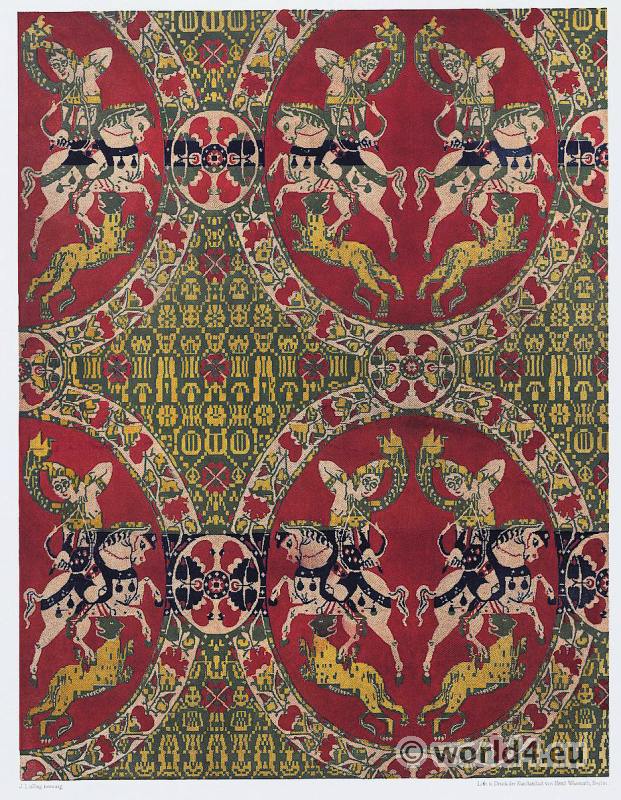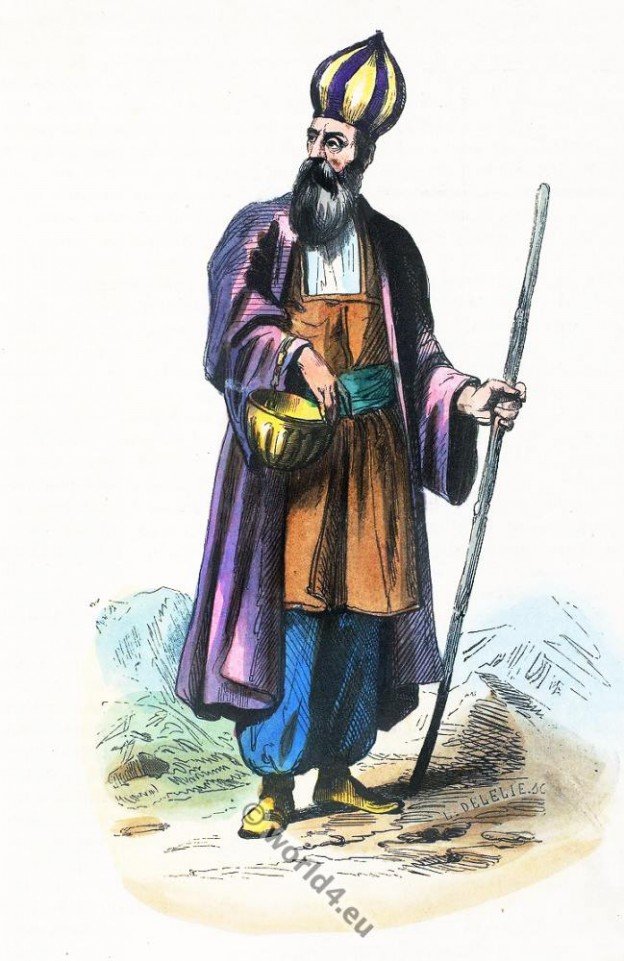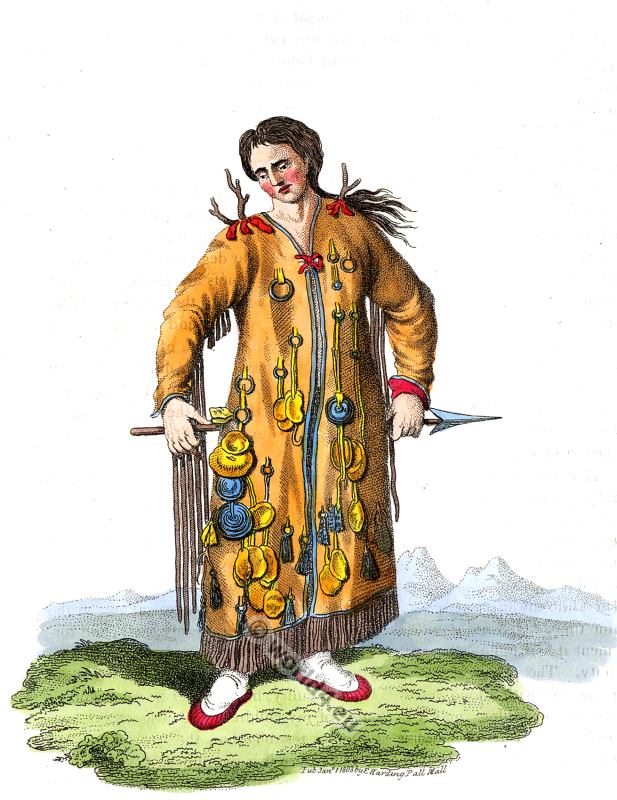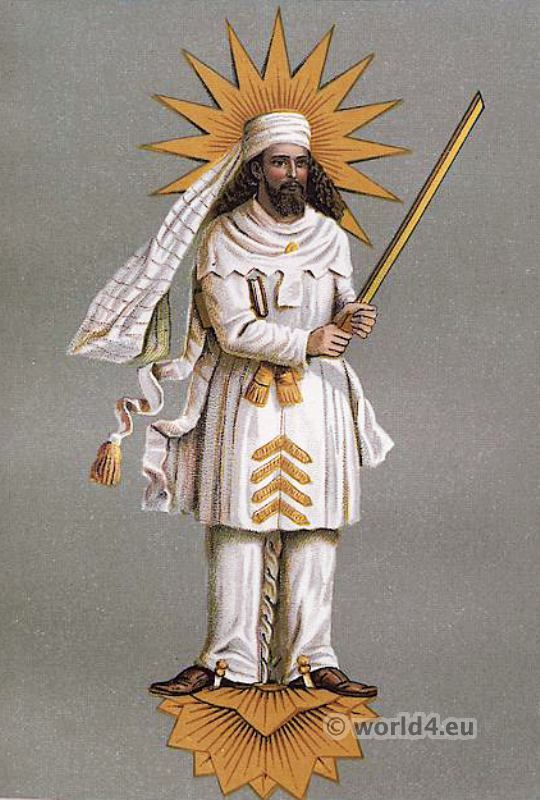The fingers were those of famous enemies, noted for their superior courage and bravery, whom the Cheyennes had killed in battle during their various wars.
Category: Ecclesiastical
Ecclesiastical dresses and antiques. Medieval, Byzantine.
Byzantine silk fabric. The mantle of St. Fridolin. 4th to 8th century.
The pattern shows a transformation of a Sassanid pattern of VI-VII. Century. The fabric itself belongs to the Byzantine period of the VII.-VIII. Century.
Russians in Siberia. Ethnic groups in 18th century
Russians in Siberia. Ethnic groups in 18th century. A Tunguzian taking a Solemn Oath. Russians Travelling with Dog Sleads in Siberia. Mongolian Lady and Priest. Burattians Hunting. From the book: ‘Navigantium atque Itinerantium… Read More
Persian priest or mullah in 1840
Persian priest or mullah in 1840.
A follower of Sufism. Sufi orders. Persian dervish in 1840.
Sufism is a collective term for movements in Islam that have ascetic tendencies and a spiritual orientation, often referred to by the word mysticism. A follower of Sufism is called a Sufist, a Sufi practitioner or dervish.
The Islamic prayer. Ar-Rifa’ min Ar-Ruku’, or Inclination.
Rukūʿ, Arabic ركوع, bowing with the upper body’, is a posture prescribed by ritual law during prayer in Islam. A bow is called: rakʿa(do)
Back Figure of a Female Shaman, or Sorceress of Krasnajarsk.
Back Figure of a Female Schaman, or Sorceress of Krasnajarsk.
Evenk Shaman. A Tungusian Priest, in the Vicinity of the Argun.
THE Evenks (Formerly Tungusian) are pagans of the sect of the Shamans.
Back view of an Evenki Shaman in the Vicinity of the Argun.
The Evenks are recognized as one of the Indigenous peoples of the Russian North. The traditional religion of the Evenki is strongly influenced by shamanism.
Parsis in India. The Parsee.
History of the Parsis: including their manners, customs, religion and present position by Dosabhai Framji Karaka; in two volumes. London, 1884.










